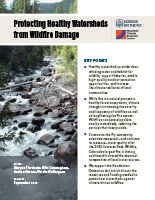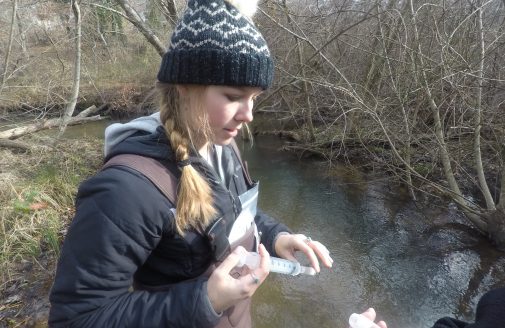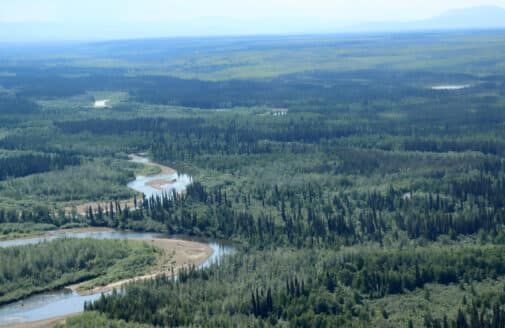Protecting healthy watersheds from wildfire damage
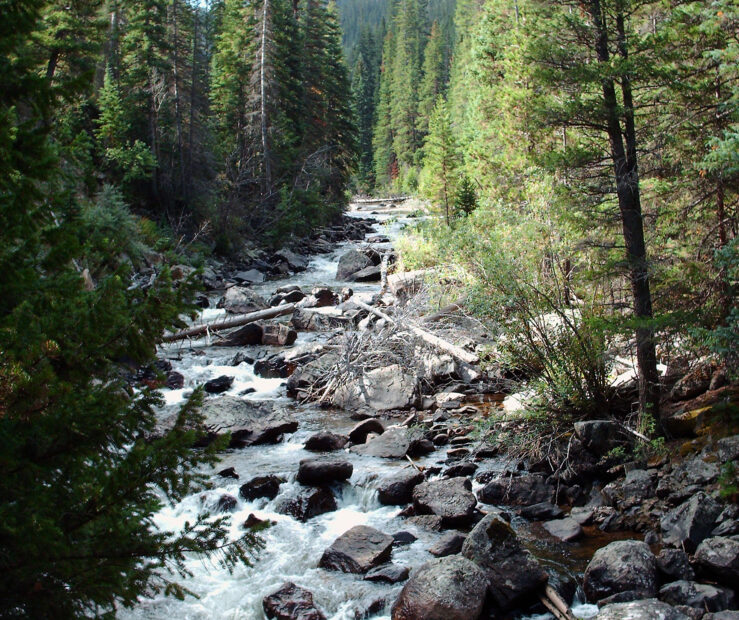
Key Points
- Healthy watersheds provide clean drinking water and habitat for wildlife, support fisheries, enable high-quality outdoor recreation opportunities, and increase the climate resilience of local communities.
- While fire is a natural process in healthy forest ecosystems, climate change is increasing the severity and frequency of wildfires, as well as lengthening the fire season. Wildfires can severely pollute nearby watersheds, reducing the services that they provide.
- Science on the Fly community scientists measured—and continue to measure—water quality after the 2020 Cameron Peak Wildfire, Colorado’s largest fire in history, and found it altered the chemical composition of local water sources.
- We support the Headwaters Protection Act, which directs the resources and funding needed to protect our watersheds against climate-driven wildfires.
Healthy watersheds, healthy communities
Thriving watersheds are essential not only for ecosystem health but also for a healthy, functioning human society. A healthy watershed is one that supports a robust, biodiverse community of native wildlife and delivers key ecosystem services, such as providing clean water and mitigating flood damage (EPA, 2012; Vollmer et al. 2018.) Indicators of watershed health include physical and chemical water quality, abundant natural vegetation in the “riparian zone” along the edge of the river, biodiversity, and resilience to hazards (EPA, 2012; Marques et al. 2021).
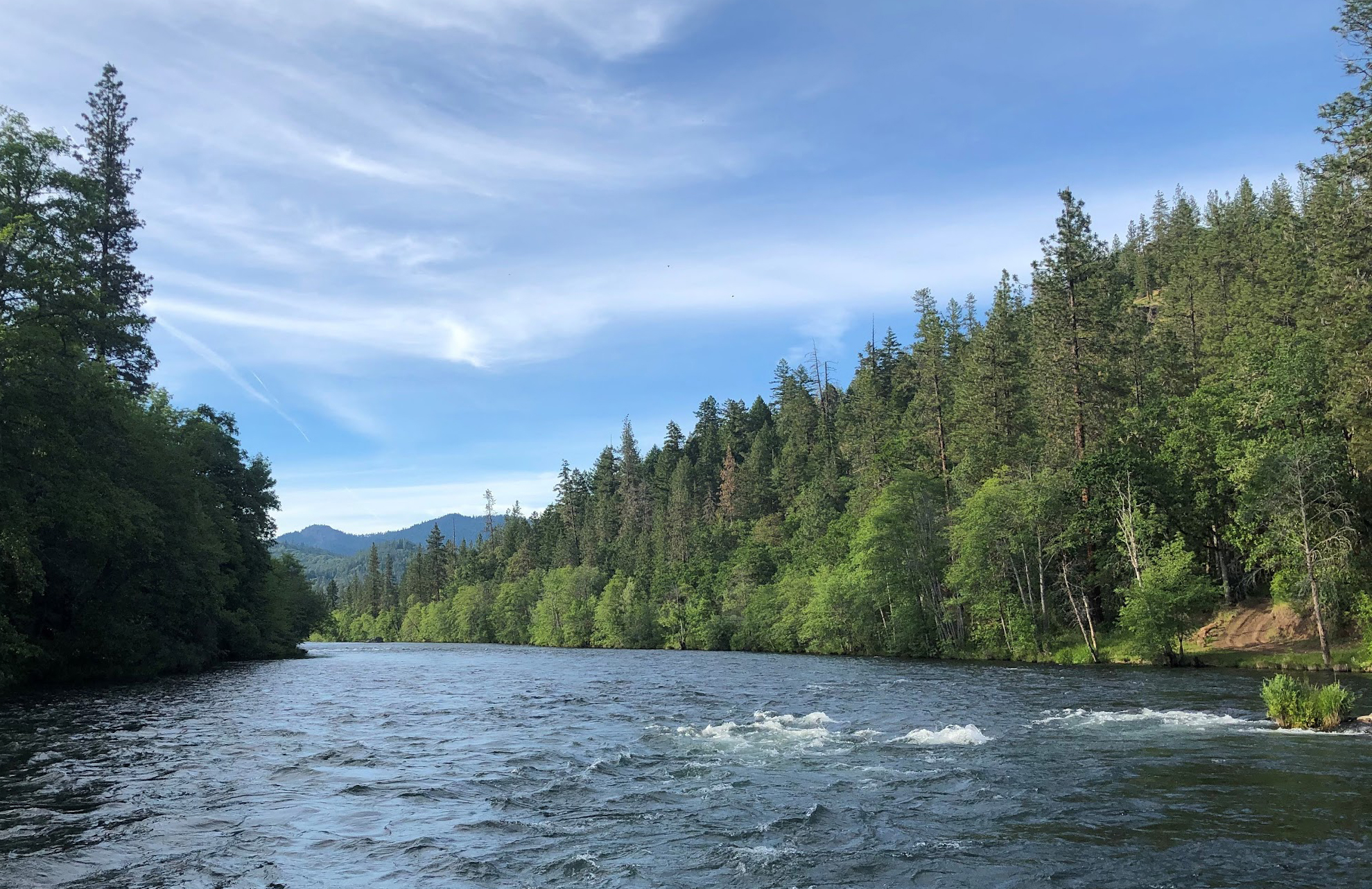
photo courtesy of Jesse Lance Robbins
The ecosystem services and benefits of healthy watersheds are plentiful. First, they supply and purify drinking water as well as water for industrial and agricultural use. Intact watersheds can reduce the cost of water treatment—the city of Seattle, Washington is estimated to have avoided $150–200 million in costs by protecting land within the watershed (Postel and Thompson, 2005). Moreover, healthy watersheds provide important habitats to aquatic and terrestrial organisms and serve as the backbone for robust inland fisheries, which contribute to economic and food security (Hascic and Wu, 2006). They also have cultural and recreational value; many support economic growth through ecotourism across the Western U.S. (EPA, 2012). Finally, healthy watersheds bolster climate resilience, reducing damage associated with hazards like droughts and floods, which cost the United States billions of dollars and countless lives every year (EPA, 2012). Climate change, however, threatens the health of our watersheds and in turn the ecosystem services they provide.
Fire on watersheds
While fire is a natural process in healthy forest ecosystems, climate change is increasing the severity and frequency of wildfires as well as lengthening the fire season. Drier conditions, earlier snowmelt, and severe drought coupled with a century of fire suppression have led to increasing fire risk (Paul et al., 2022; Birdsey et al., 2021). As a result, acreage burned per year in the United States has more than doubled from 2000–2019 relative to 1980–1999 (Birdsey et al., 2021).
Wildfires cause immediate and long-term economic losses, threaten local residents, release carbon and potent greenhouse gasses, and harm surrounding ecosystems. Wildfires also threaten watersheds and nearby water bodies, where they deposit pollutants and alter the physical and chemical makeup of the water (Paul et al., 2022). These changes can impair safe drinking water, harm fish populations, prevent water-based recreation, and increase postfire runoff leading to potential floods and landslides (Paul et al., 2022; Williams et al., 2022). Consequences are particularly concerning in the wildland urban interface, where harmful contaminants from the built environment, such as heavy metals and plastics can run into nearby watersheds. When pollution is severe, contaminants beyond regulatory limits can even be found in finished drinking water (Pennino et al., 2022).
Case study: Impact of the 2020 Cameron Peak Fire on the Cache la Poudre River Watershed
Science on the Fly, a project of Woodwell Climate Research Center and Fishpond, is committed to researching the impacts of climate change on freshwater ecosystems, including how wildfires affect healthy watersheds. The project seeks to further our understanding of changing watersheds by empowering members of the fly fishing community to act as community scientists. Each month, they collect river water samples, allowing us to study the changes in water quality overtime due to climate change. Science on the Fly now has 152 volunteers across the world, including in Colorado’s Cache la Poudre River Watershed.

Figure 1: A map of the Cache la Poudre River Watershed, showing the areas impacted by the 2020 Cameron Peak Fire (yellow outline) and sites of river water samples (orange dots).
map by Christina Shintani
The Cache la Poudre River Watershed was affected by the 2020 Cameron Peak Wildfire, which burned over 208,000 acres, making it the largest wildfire on record in the state (DFPC, 2023). As a result of our dedicated community scientists, we obtained water samples after the Cameron Peak Fire and compared samples from areas within, upstream, and downstream of the fire’s burn. Even a year after the fire, the samples indicated that the fire had an impact on several chemical water quality indicators: ammonium, phosphate, and dissolved organic carbon. While more research is needed to fully understand the effects of the Cameron Peak Fire on water resources, the Science on the Fly samples emphasized that unnaturally large, frequent wildfires alter the ecosystems we rely on for drinking water and recreation alike.

Figure 2: Plots showing the levels of ammonium, phosphate, and dissolved organic carbon (left to right) in the burned area (red) and downstream of the fire (gray) compared to the upstream control (blue). Letters above the data indicate a significant difference among means of the three tested zones (e.g., a is different from b, ab isn’t different from a or b). Samples were taken a year after the fire.
Conclusion and recommendation
As climate conditions worsen, we can expect that more watersheds will be vulnerable to wildfires. Our findings and additional research show that wildfires can severely alter the chemistry of nearby watersheds, reducing the ecosystem services that they provide. To prevent or address these impacts, we recommend the federal government take the following actions:
- Invest in reducing wildfire risk where possible, particularly in the wildland urban interface, leveraging the potential of nature-based climate solutions.
- Expand watershed health evaluation to better monitor the impacts that wildfires and other climate hazards are having on watersheds.
- Prioritize watershed research and protection projects that account for and reduce the effect of wildfires on drinking water.
Our recommendations align with the recently introduced Headwaters Protection Act, which directs the resources and funding needed to protect our watersheds against climate-driven wildfires.
References
Birdsey, R., Zobel, Z., McGlinchey, D., Walker, W., Baillargeon, N., Natali, S., Bush, G., and Houghton, R. (2021). Principles and Safeguards for Natural Climate Solutions. Woodwell Climate Research Center. https://www.woodwellclimate.org/wp-content/uploads/2021/05/Principles_and_Safeguards_for_Natural_Climate_solutions.pdf
Division of Fire Prevention & Control (DFPC). Historical Wildfire Information. https://dfpc.colorado.gov/sections/wildfire-information-center/historical-wildfire-information
Hascic, I. and Wu, J. (2006). Land use and watershed health in the United States. Land Economics, 82(2), 214-239. https://doi.org/10.3368/le.82.2.214
Marques, N. C., Jankowski, K. J., Macedo, M. N., Juen, L., Luiza-Andrade, A., and Deegan, L. A. (2021). Riparian forests buffer the negative effects of cropland on macroinvertebrate diversity in lowland Amazonian streams. Hydrobiologia, 848(15), 3503-3520. https://doi.org/10.1007/s10750-021-04604-y
Paul, M. J., LeDuc, S. D., Lassiter, M. G., Moorhead, L. C., Noyes, P. D., and Leibowitz, S. G. (2022). Wildfire Induces Changes in Receiving Waters: A Review With Considerations for Water Quality Management. Water Resources Research, 58(9), e2021WR030699. https://doi.org/10.1029/2021WR030699
Pennino, M. J., Leibowitz, S. G., Compton, J. E., Beyene, M. T., and LeDuc, S. D. (2022). Wildfires can increase regulated nitrate, arsenic, and disinfection byproduct violations and concentrations in public drinking water supplies. Science of The Total Environment, 804, 149890. https://doi.org/10.1016/j.scitotenv.2021.149890
Postel, S. L. and Thompson Jr, B. H. (2005). Watershed protection: Capturing the benefits of nature’s water supply services. Natural Resources Forum, 29(2), 98-108. https://doi.org/10.1111/j.1477-8947.2005.00119.x
U.S. Environmental Protection Agency. (2012). Identifying and Protecting Healthy Watersheds: Concepts, Assessments, and Management Approaches (Report No. EPA 841-B-11-002). https://www.epa.gov/sites/default/files/2015-10/documents/hwi-watersheds-complete.pdf
Vollmer, D., Shaad, K., Souter, N. J., Farrell, T., Dudgeon, D., Sullivan, C. A., … and Regan, H. M. (2018). Integrating the social, hydrological and ecological dimensions of freshwater health: The Freshwater Health Index. Science of the Total Environment, 627, 304-313. https://doi.org/10.1016/j.scitotenv.2018.01.040
Williams, A. P., Livneh, B., McKinnon, K. A., Hansen, W. D., Mankin, J. S., Cook, B. I., Smerdon, J. E., Varuolo-Clarke, A. M., Bjarke, N. R., Juang, C. S., and Lettenmaier, D. P. (2022). Growing impact of wildfire on western US water supply. Proceedings of the National Academy of Sciences, 119(10), e2114069119. https://doi.org/10.1073/pnas.2114069119
Latest in Water
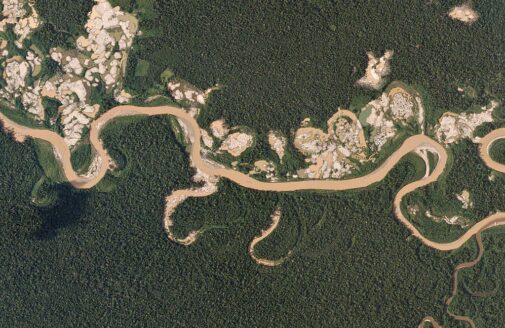
- In The News
Gold mining causes long-lasting damage in the Amazon rainforest
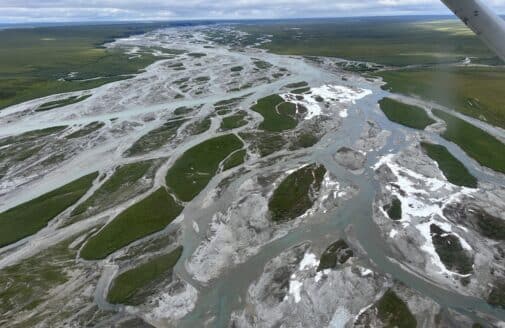
- In The News




